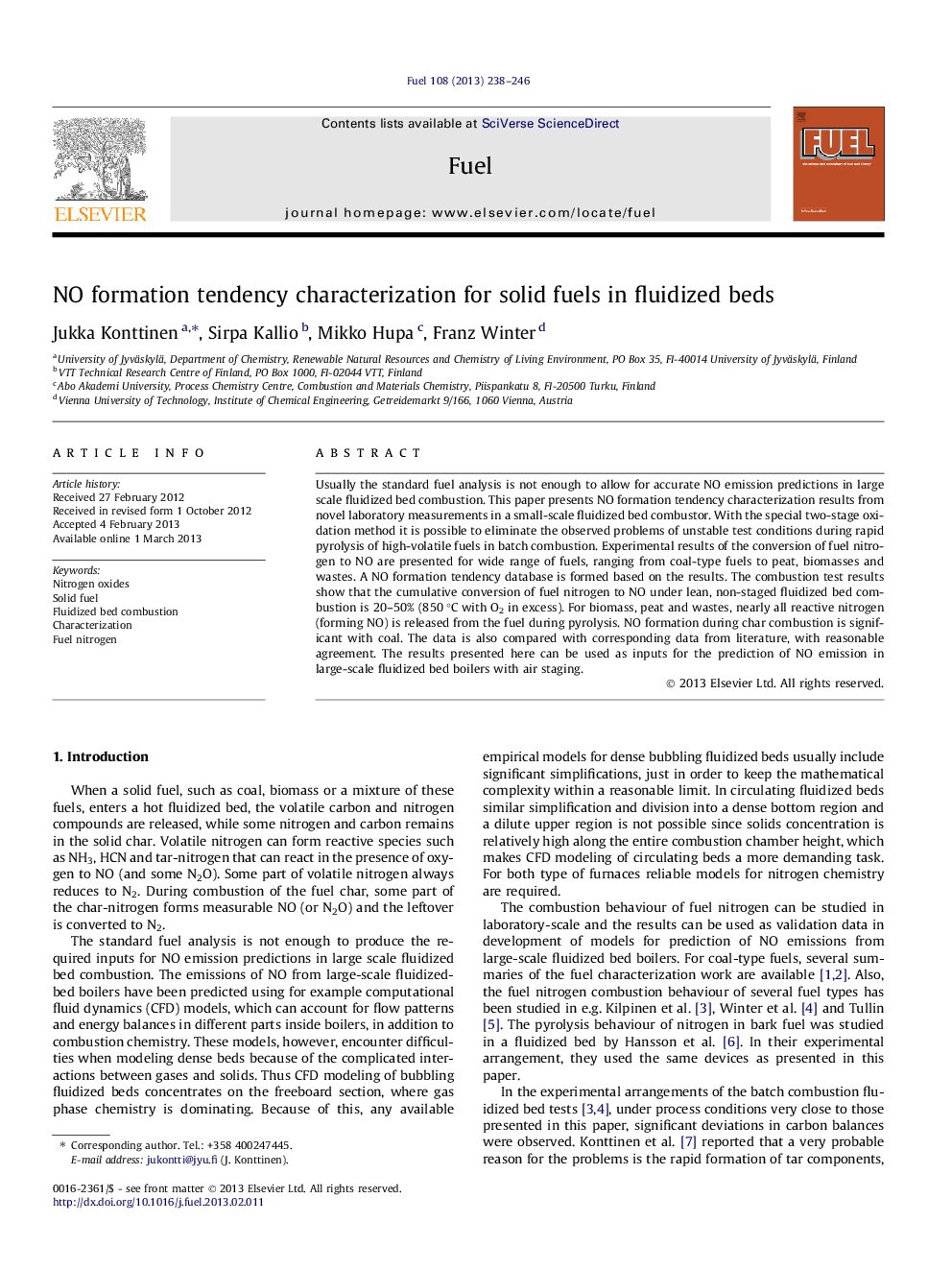| Article ID | Journal | Published Year | Pages | File Type |
|---|---|---|---|---|
| 6641053 | Fuel | 2013 | 9 Pages |
Abstract
Usually the standard fuel analysis is not enough to allow for accurate NO emission predictions in large scale fluidized bed combustion. This paper presents NO formation tendency characterization results from novel laboratory measurements in a small-scale fluidized bed combustor. With the special two-stage oxidation method it is possible to eliminate the observed problems of unstable test conditions during rapid pyrolysis of high-volatile fuels in batch combustion. Experimental results of the conversion of fuel nitrogen to NO are presented for wide range of fuels, ranging from coal-type fuels to peat, biomasses and wastes. A NO formation tendency database is formed based on the results. The combustion test results show that the cumulative conversion of fuel nitrogen to NO under lean, non-staged fluidized bed combustion is 20-50% (850 °C with O2 in excess). For biomass, peat and wastes, nearly all reactive nitrogen (forming NO) is released from the fuel during pyrolysis. NO formation during char combustion is significant with coal. The data is also compared with corresponding data from literature, with reasonable agreement. The results presented here can be used as inputs for the prediction of NO emission in large-scale fluidized bed boilers with air staging.
Related Topics
Physical Sciences and Engineering
Chemical Engineering
Chemical Engineering (General)
Authors
Jukka Konttinen, Sirpa Kallio, Mikko Hupa, Franz Winter,
